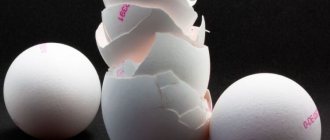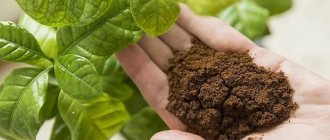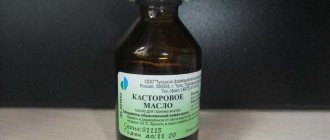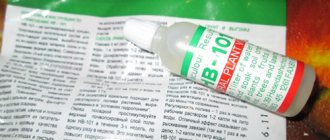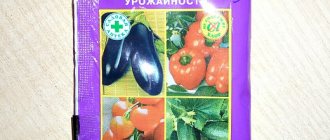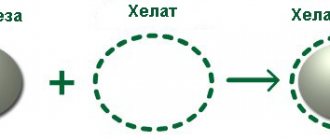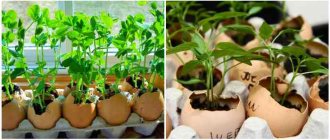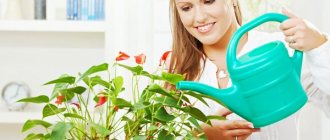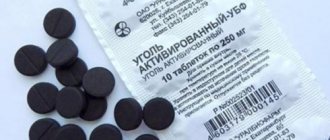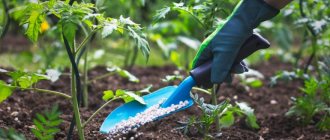7021
Millions of people of all ages drink tea brewed from fermented or green leaves every day. The drink has become so popular that meeting guests and lunch breaks is indispensable without it. Restless housewives also find a use for the cake left after drinking tea. Garden and indoor flowers can benefit from drinking tea as a fertilizer. Welding improves the composition of the soil, nourishes the root system, and therefore increases the decorative properties of plantings and the quality of the harvest.
Making tea
Tea as fertilizer for plants in garden beds
The advantage of sleeping tea, in addition to its availability as a supplement, is its prolonged effect. It does not release all the contained components to the crops at once, but as they decompose.
Before using in the garden, it is recommended to pre-dry the tea leaves. Such preparation will eliminate the possibility of the material becoming moldy. It is also undesirable to use raw materials from a drink to which sugar has been added: such tea leaves must be washed so as not to attract ants to the beds.
Dormant tea can be added to the soil at any stage of plant development: from preparing the bed to the period of fruit formation. It is optimal to add to holes when planting seedlings or sowing crops. It is important to consider that this fertilizer acidifies the soil, so it is especially recommended for the following vegetable crops:
- cucumbers;
- radish;
- pumpkin;
- carrot;
- sorrel.
If there is no need to increase the acidity of the soil, tea leaves should be added simultaneously with wood ash.
Advantages and disadvantages of the method
Fertilizing and watering using tea leaves have both pros and cons. The main advantage of this method is its accessibility. Tea leaves are found in every home and are quite easy to use. There is no need to look for special fertilizers and dilute them in a special way. At the same time, the benefits of tea leaves have long been known.
Among the advantages of this method the following facts are also mentioned:
- Tea leaves scare away cats. Cats quite often nibble on plants and throw soil out of the pot. To repel pets, gardeners use various methods, for example, citrus peels. But no less effective is tea leaves, the smell of which repels cats.
- You can use tea leaves in a variety of ways. In addition to watering, tea leaves act as mulch or even drainage. When replanting a plant, it is recommended to supplement the drainage with tea leaves. By the time the roots grow to the bottom of the pot, the tea leaves will already rot and become an excellent fertilizer.
- Ease of use. Simply water the plant with the remaining tea. This is a simple procedure that anyone can do.
The method also has several disadvantages. For example, not every tea is suitable. It must be pure, without additives, and fresh. The presence of any chemical impurities will lead to a negative result. Overmoistening is also a negative factor. Often the use of tea leaves can lead to chlorosis. You also need to monitor the strength of the tea. Tea that is too strong will harm the flower, and tea that is too weak will not be effective enough.
The disadvantage of the method is its non-universality. Not all plants like such fertilizers. If the flower prefers acidic soil, then after watering it with tea it will begin to hurt.
More information can be found in the video:
Dried tea as fertilizer for seedlings
Used tea bags and their contents are a good replacement for peat tablets when growing seedlings yourself. It is very simple to prepare an unusual container. We cut the bags at the top and fill the free space with purchased soil mixture. Pressing them tightly together, place the “cups” in a container or tray. It is important that the bags do not tip over. We water the soil and sow the plants. When the seedlings reach the stage required for picking, we transplant them directly with tea bags.
In this case, sleeping tea will provide good nutrition to young plants, and the bags will protect the roots of the seedlings from damage during transplantation, which will eliminate the painful adaptation process.
Using tea leaves
The remaining tea in the teapot is placed on a sieve and dried, then placed in a storage container. If you wish, you can collect a considerable amount of this fertilizer over the winter, especially if your family likes to drink tea. In the spring, it can be used for various purposes - dug up with soil, added to compost, sprinkled under plants as fertilizer and mulch.
The easiest way to use tea leaves is to add them to a compost heap. The tannins contained in tea activate the decomposition process, causing the compost to rot faster.
Spent tea as fertilizer for indoor plants
The used tea leaves are also used in indoor floriculture. There are at least 4 possible directions for its use:
- Foliar feeding. Water the pot with the remaining liquid from the teapot 1-2 times a month. Or make a special infusion of drunk tea for this. Ferns and cacti respond well to this feeding.
- Improving soil quality. Add dry tea leaves in any quantity to the soil mixture for indoor flowers. This ingredient will not only increase the nutritional value of the soil, but also improve its breathability and protect against mold formation.
- Drainage. Tea leaves for flowers can replace expanded clay if you place it at the bottom of the pot. Dried bags will do the job best.
- Pet protection. Relying on the specific smell of sleeping tea, it is recommended to use it as mulch to protect pots from attacks by cats.
Thus, the tea leaves that just yesterday went into the trash can will allow you to achieve abundant flowering and rich greenery on the windowsills.
Methods of application
To make fertilizer, you can only collect loose leaf tea without additives or artificial flavors. The bags are not suitable for use in the garden or vegetable garden, since the leaves inside them are ground too finely and resemble more like ordinary dust, often with the addition of dyes. For any of the methods, the tea leaves must first be dried. It is better to dry in a dark place, since direct sunlight negatively affects the microelements contained in the leaves. High heat is not recommended.
In tablet form
The use of various ready-made tablets for seedlings has become a common practice for gardeners and gardeners. It is possible to significantly accelerate the appearance of the first shoots, as well as simplify the application of fertilizers in the first weeks of cultivation. Instead of peat tablets, you can use tea tablets made with your own hands.
On a note!
It is better to use tea with medium leaves or small fractions. Kenyan and Indian varieties are sold in this format.
There is no need to dry the tea too much, since you will need to add a little water to hold the mass together. For the tablets you will also need peat, coconut substrate in the proportions of 3:1:0.5, where 3 parts of tea. Mix everything thoroughly, pour in a little water until the mixture is slightly moistened. Line a small tea or coffee cup with cling film, place 3 tablespoons of the mixture inside, wrap, and press on a flat surface. You can plant the seedlings right away, or you can dry them, leaving the ends of the shell open, then store them and use them during the planting season.
Seed filler
Making your own filler for sowing seeds is more difficult than it might seem. Excess of active fertilizers of any kind should be avoided. The seedlings will stretch out very quickly without forming the necessary support, which is undesirable. Tea is a good filler because the leaves release nutrients slowly and in small quantities.
The leaves can be used in combination with peat and sand, with turf soil. The main soil should make up two-thirds of the total filler volume. Dry the tea first so that the soil does not become moldy and small midges do not appear in it.
Tea compost
Making complete tea compost is difficult. Firstly, you will need a lot of brewed tea. Secondly, due to tannins, the mass will rot very slowly, it will dry out more quickly. Constant moisture will be required, which can lead to the appearance of insects and parasites. The smell from such homemade compost will be pungent, so it is better not to store the container with tea in a house or apartment.
The best option for using tea leaves is to add tea leaves to regular classic compost up to a volume of about 20 percent of the total mass. The leaves, by releasing their enzymes, will significantly accelerate the decomposition of other organic components, so the compost will be ready for use in much less time. You can apply this compost with tea according to the standard fertilization scheme.
On a note!
You can use both green and black tea for this purpose. Exotic varieties of blue, white, and yellow species will not spoil the overall mass, but they will not bring much benefit either.
Fertilizer
As a classic fertilizer, you can use either freshly brewed tea, not yet dry, or pre-dried tea, and even an infusion of such raw materials. The first option is best suited for open ground. It is better to combine tea leaves with ash, which is added during planting or digging.
When adding fresh tea leaves that are still wet, you can ignore the growth phase of the crop. At any time, you can add leaves to the soil and carefully dig them up. Fertilizer with dry tea leaves is suitable for indoor plants. They must be added in small quantities to the soil during transplantation.
It is better to put fertilizer directly into the holes in the spring, since quite a lot of tea will be needed. Half a kilogram per square meter is an average calculation for moderately alkaline soils. If the PH imbalance is obvious, the dosage should be increased to 0.7 kilograms per meter.
A nutritious infusion can be prepared as follows: pour 1 glass of dry tea leaves with 3 liters of boiling water. Leave until completely cool. It is advisable to use it within the first 24 hours. There is no need to dose this fertilizer; it can simply be used when watering instead of regular water. This is an excellent option when additional feeding is needed in the middle of the season. A small concentration of microelements will not harm even the weakest plants, but will strengthen them.
Improving soil structure
You should place dry or still wet tea in the soil before digging if it is necessary to improve the properties of the soil in a particular area. First of all, in this way you can loosen and lighten the overall mass. It is worth using the largest tea leaves. Thanks to the concentration of tannins, they do not rot for a long time even in conditions of high humidity, so one application per year will be quite enough.
Tea leaves are also capable of:
- help in the fight against fungal plant diseases;
- reduce the risk of mold;
- reduce alkaline level.
On a note!
You can determine that there is too much alkali in the soil in a simple way: just pour a little vinegar on the ground in an area where there will be no plantings. If a chemical reaction with hissing is noticeable, then the pH is far from neutral.
Getting rid of mold is especially important for those who grow flowers and vegetables at home, actively use greenhouses and small enclosed front gardens. To achieve a stable result, it is worth adding dry tea leaves, and annually. Throughout the season, the fertilizer will gradually decompose, releasing all the useful microelements to the plants and soil.
Mulching with tea
One of the easiest ways to use old tea leaves is to turn it into mulch. By covering the soil with such a protective layer, you can protect it from excessive drying out and cracking, even in adverse weather conditions. The number of weeds will also decrease.
You can mulch the soil in this way even in spring and early summer. The leaves will remain light after watering, so young shoots will easily emerge into the light. In the fall, the entire accumulated layer can be dug up along with the soil; it will serve as additional fertilizer.
Using tea leaves as tea leaves is a universal way to improve the quality of the soil and strengthen the immunity of the plants themselves. It can be used in areas of risky farming, in black soil, and even in the southern regions. Dried leaves can be stored for a long time, so you should start collecting tea leaves in the fall in order to make an excellent fertilizer from it in the spring.

